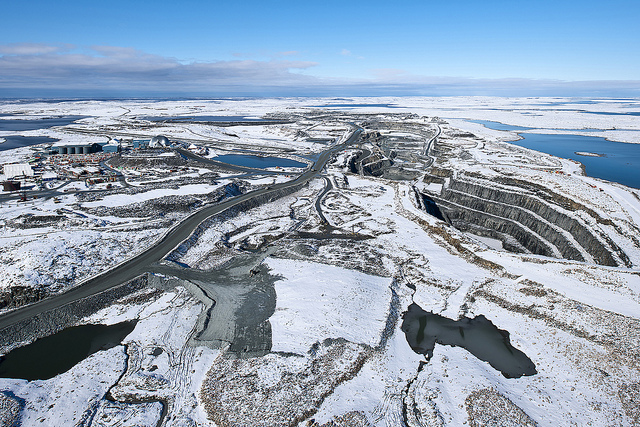Source: Kitco News
Written by: Anna Golubova
Nunavut, Canada’s northernmost territory, is entering the most prosperous period in its history due to surging mining development and exploration, this according to the territorial government’s senior economist.
“Over the next four years, we are going to have growth in mine exploration, production, and capital investment, including mine development and construction,” Francois Picotte said in a telephone interview with Kitco News. “By 2020, the production of minerals here in Nunavut will most likely have doubled if not more. Here, we are talking of gold and iron ore mainly.”
Picotte estimates that the yearly growth in Nunavut will likely be well above the 5% mark for the next 4 years.
The biggest driver for the resource industry’s advance is the opening of a new mine in Nunavut — Agnico Eagle’s Meliadine, which is set to become operational in late 2019. “It will be a fourth mine in operation and it will give a strong boost to production,” noted the senior economist.
Agnico Eagle is also opening up its satellite deposit of the existing Meadowbank mine, known as Amaruq.
The Canadian-based gold producer has already committed to invest U.S. $1.2 billion into mine development in Nunavut over the next two-and-a-half years. Three quarters of that will be invested in Meliadine and about a quarter in developing Amaruq, which will be connected to Meadowbank via a 64-kilometre road.
“That is very intense investment for us. Nunavut is a large territory, but has a small population and a rather small economy. So, this kind of influx of financial resources will increase the investment in Nunavut in a very significant manner and that will boost capital investment and mine development,” Picotte said.
Production will also ramp up in the next few years at Baffinland’s existing Mary River mine on Baffin Island and at TMAC Resources’ new Hope Bay mine located in the Kitikmeot region, the senior economist added.
According to Picotte, mineral exploration is also looking up in the territory, mainly due to better prices and existing mines looking to extend their life cycles.
“A lot of the exploration is carried out by mining companies around the periphery of their existing mines because they want to make sure their mine life could be extended as much as possible in order to reduce relative cost of initial investment,” Picotte explained. “There is also a bit more optimism in the mining sector, as metal prices have gone up as well.”
Nunavut has policymakers to thank for such prosperous conditions. “We can salute and commend the decisions that were made to foster the right climate for the development of these resources over the last 5-10 years,” he said.
.jpg) |
|
© Agnico Eagle Mines: Amaruq exploration camp
|
Picotte added that the northern territory has been the fastest growing region since 2000 out of all Canadian jurisdictions.
“Since the establishment of Nunavut, if we compare to all other provinces and territories, it is the fastest growing by far. Since 1999, Nunavut’s GDP has grown over 100% in real terms or over 200% in current dollars. That is much faster than the average growth in Canada,” he said.
Nunavut saw its largest capital investment in the mining sector in 2008, which exceeded $1 billion. “We haven’t had a number like this up to now. Over the next three years, we foresee it exceeding the $1 billion mark on average.”
Mining is estimated to grow faster than the rest of the economy in the next few years and is projected to have a positive impact on other sectors of the economy.
“Mining companies and the people they employ contribute to the greater economy by buying goods and services, art, tourist products, using local transportation, and eating local food. Certainly, we are trying to diversify as much as possible. We will continue to use this growth in one sector to help the other sectors develop,” Picotte said.
